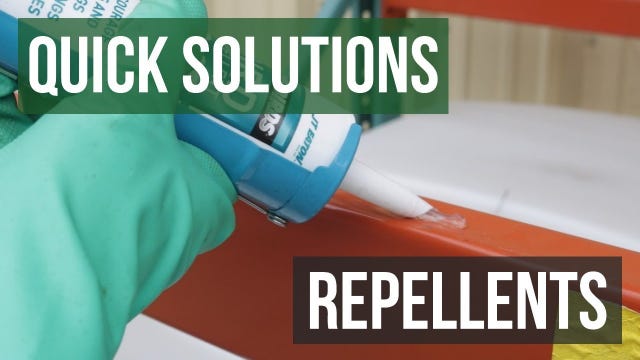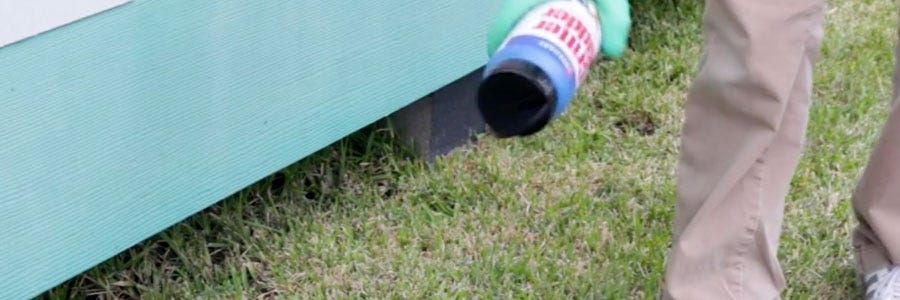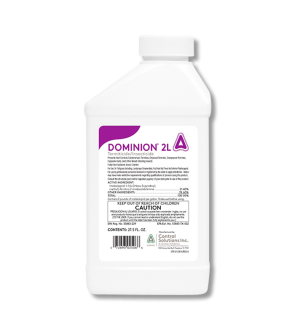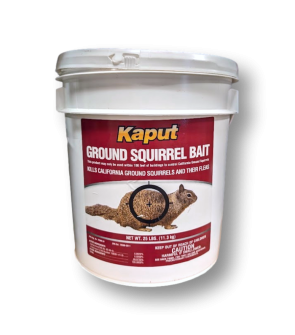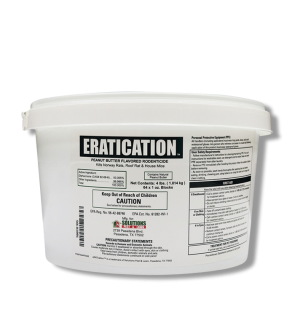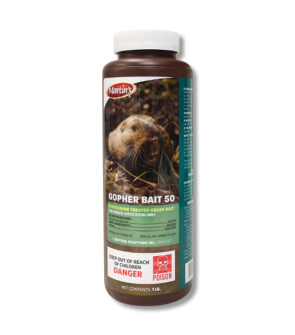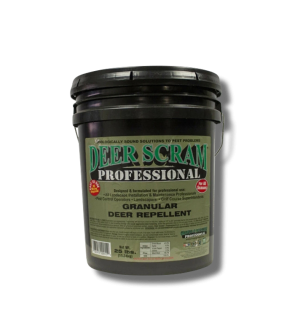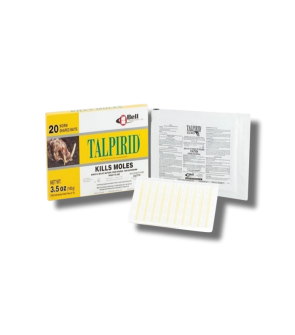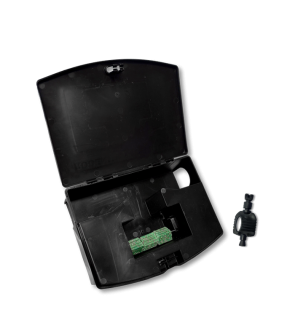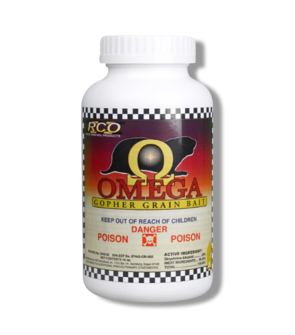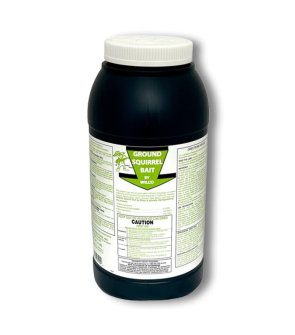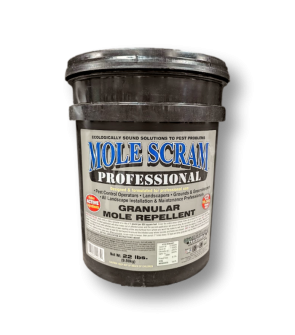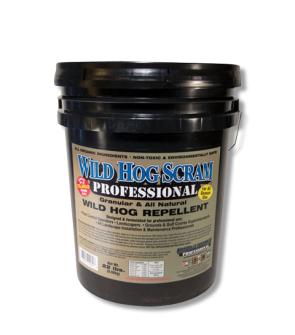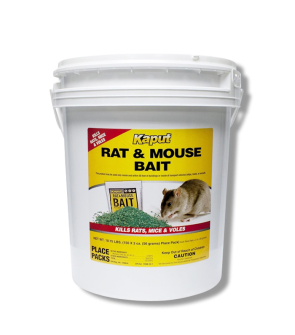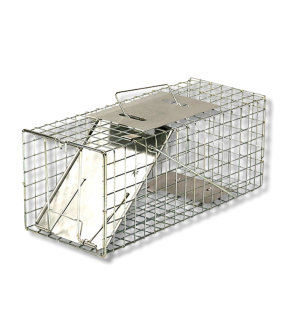Gain access to personalized product screening, the best pricing, rewards, and more!
Most Effective Products
Animal Control: How To Get Rid of Pest Animals
This page is a general animal control guide. By using the products and methods suggested, you will get control of any animal species. The animal category pages give additional information on different species. Follow these guides and use the recommended products and you will get 100% control of all pest animal species guaranteed.
Getting visited by wildlife is a common issue for homeowners and businesses. Whether it's squirrels, chipmunks, raccoons, or skunks, their presence is unwanted. Pest animals will be typically found outdoors and will visit your property periodically. They can also set up camp in your attic, basements, and wall voids.
Invading animals will visit properties looking for food and shelter. They might rummage through your garbage, or seek shelter during the wintertime.
Animals bring many health hazards due to being unsanitary; they carry fleas, ticks, and mites and are capable of spreading rabies, giardiasis, trichinosis, and salmonellosis. If you are encountering an invading animal on your property, you can ward them away or capture them with the help of our guide below or the specific animal guides in this section.
Identification

There are many species of animals that can visit a property. Treatment approaches vary depending on the animal trespassing, so it is important to identify the animal so you know what the right methods should be implemented to address the animal. Animal identification can be made easier by determining the sites they are visiting and where they are harboring.
- Indoors most pest animals such as rodents and raccoons will hide in walls, in crawl spaces, attics, and beneath structures. If you suspect there is wildlife living in your walls, listen carefully for activity. If you're hearing activity at night you might have raccoons, or opossums. If you hear noises during the day there might be squirrels, chipmunks, or groundhogs.
- Outdoors many animals can visit your property. Raccoons, opossums, and other rodents will visit your property at night looking for food sources. While snakes, squirrels and other small rodents will be most active during the day.
If you can not determine the exact species of animal you are dealing with, then this guide will treat most animal issues.
Inspection
After you have identified the trespassing animal, you should proceed with inspection. During the inspection phase, you need to know the access points the animals are using to enter the property, and where they could be possibly hiding.
Where To Inspect
Indoors: Inspect garages, basements, crawl spaces, in walls, and attics. Focus on dark, secluded areas that do not see a lot of activity from humans and pets.
Outside: Look in window wells that lead to basements, in voids and crevices in the structure, in crawl spaces, under porches and patios, along fence lines, and near garbage cans. On the roof, inspect the gutter line and fascia, soffits and eaves, attic vents, chimneys, and under overhanging sections.
What To Look For
You're looking for potential entry points into your home and possible harborages. You might hear activity while you search in areas of your property where no sounds should be heard. Also check for footprints, chewed openings, scratch marks, and foul smells.
Don't forget to check the integrity of your fence. Look for openings that animals are using to get inside. If your garbage cans are often overturned and spilled, this could be a sign of an animal in your property. You will apply treatment in these potential entry points and where you have seen animal activity.
Treatment
Once you have located entry points and animal activity, it is time to begin treatment. Remember to first read product labels and follow their application instructions, and stay safe by wearing personal protective equipment (PPE).
Step 1: Exclude Entry Points
First, you need to fix and repair any entry points that animals are using to get into your property. To do this you will need Solutions Sealator Pro Black Foam and wire mesh like Stuf-Fit Copper Mesh.
The Stuf-Fit Copper Mesh will be used for small cracks and crevices that small animals like rodents are using to get inside. This product will irritate animals that come close to it when they attempt to scratch or gnaw through the material.
For a more general coverage of pests such as lizards, other animals, or even insects we recommend using Solutions Sealator Pro Black Foam. Once dried, this foam will create an airtight seal that most pests will not be able to travel through.
Before using either of these products begin by locating the cracks and crevices around your property.
When using either of these products you will need to wear gloves to mask your scent from wildlife and to also fully protect yourself during applications.
Simply insert the Stuf-Fit Copper Mesh into the opening where pest activity has been witnessed or that support entry into your structure.
Prior to using Solutions Sealator Pro Black Foam you will need to clean out these entry holes if there is dust, grease, or other loose particles that may obstruct proper foam sealing.
After these holes have been cleaned, connect the spray gun with the Solutions Sealator Pro Black Foam can until it is fully secured. Once connected, shake the gun up and down about 20 times.
Open the control knob on the foam gun then squeeze the trigger to make a continous and even spray to these openings until filled. After application, wipe the tip of the foam gun off.
Other openings that cannot be properly filled such as voids in fences will need to be repaired or fixed. Wire mesh may also need to be installed around crawl spaces, gardnes, or under patios and porches.
Step 2: Live Capture

For example, the small size of this box-style trap would control chipmunks, rabbits, rats, squirrels, and weasels.
The medium size would control muskrats, skunks, cats/stray cats, armadillos, groundhogs, and raccoons. And the large size would control armadillos, beavers, bobcats, cats, dogs, foxes, groundhogs, opossums, and raccoons.
Too small or large of a trap could allow enough room for the animal to escape or avoid setting the trap off resulting in possible harm to the animal or escape.
Determine where the animal is most active and place the Solutions Humane Live Animal Trap where the animal is most likely to come across the trap.
Avoid placing the product in the middle of the field or area as most animals will avoid this. Best place to set is in the middle of an animals travel pathway, along the edge of buildings, or within vegetation the animal may use to hide in.
To avoid the animal becoming over-heated we recommend placing the traps underneath shade or setting several sticks and other vegetation on top of the trap to block sunlight.
For much larger animals, placing a rock or brick on top will help keep the trap in place.
After determining the area the animal is frequently visiting, you can then bait and set the trap. Place the bait at the back of the trap to ensure the animal steps on the trigger plate to set off the trap.
Set the Solutions Humane Live Animal Trap by pushing on the door lock and lifting the door plate. While holding the door plate open begin pushing the trigger arm forward to set it.
You will know the trap is set when the trigger arm catches the door and it remains open without assistance.
Place the setted Solutions Humane Live Animal Trap on a flat, even surface. Return to the trap in the early morning and evening to see if bait needs to be replaced or if your animal is caught.
If the animal is captured, contact your local animal control authorities so they can properly relocate the animal or provide instruction to you on how to do so.
Step 3: Outdoor Treatment with Repellent
The reality is that most animals will continue to return to specific outdoor areas around your property if they provide shelter or food. For that reason, we recommend using repellents.
A general animal control repellent that we suggest to use is Animal Stopper Granular Repellent.
Animal Stopper Granular Repellent is a natural granular repellent designed to humanely repel wild animals from crops and ornamentals.
This product will work to create a perimeter barrier around the treated area that will safely irritate the animals sense of smell and taste for up to 30 days.
When using the 2-and-a-half-pound container of Animal Stopper Granular Repellent, just simply open the tab and shake the product over the area you wish to protect. For other sizes of this product you may need to use a handheld spreader.
Apply Animal Stopper Granular Repellent liberally to dens, tunnels, entries, and around plants that need protection. When using near edible crops, apply only as a perimeter application.
Repeat applications every 30 days or until the animal activity is no longer noticed.
Prevention

- Make sure all vents around the structure have appropriate screening.
- Keep garbage cans closed with bungee cords to prevent animals from getting inside. Keep pet food and water bowls inside your home and do not leave them outside overnight.
- Get rid of other food sources such as bird feeders that wildlife will feed on.
- Build fences around your garden or compost piles using wire mesh.
- Keep up with regular lawn and outdoor plant maintenance by pruning overgrown foliage and mowing turf when it has reached 3 inches in height. Tall vegetation supports possible food sources for this animal to feed upon or to rest when not active.
- Apply Animal Stopper Granular Repellent outside your property every 30 days to maintain a repellent barrier in your property. If repellents fail to prevent animals from entering your property, use a Solutions Humane Live Trap to catch or monitor for possible wildlife intruders.
Key Takeaways
What Animals Invade Homes?
- There are many different animals that can trespass onto a property such as raccoons, opossums, snakes, squirrels and others.
How To Get Rid of Trespassing Animals
- Depending on the animal, you should practice exclusion by using Stuf-Fit Copper Mesh and Solutions Sealator Pro Black Foam. Next, physically capture the animal with the Solutions Humane Live Animal Trap and apply Animal Stopper Granular Repellent outside of the home.
Preventing Animal Reinvasion
- Remember to close entry points into your home. Fix or repair holes in fences as well as openings that lead inside the structure. Apply Animal Stopper Granular Repellent on a monthly basis to repel wildlife from entering your property. Keep garbage cans closed and away from your property. Protect your garden or compost pile by building fences around vegetables and fruits.






